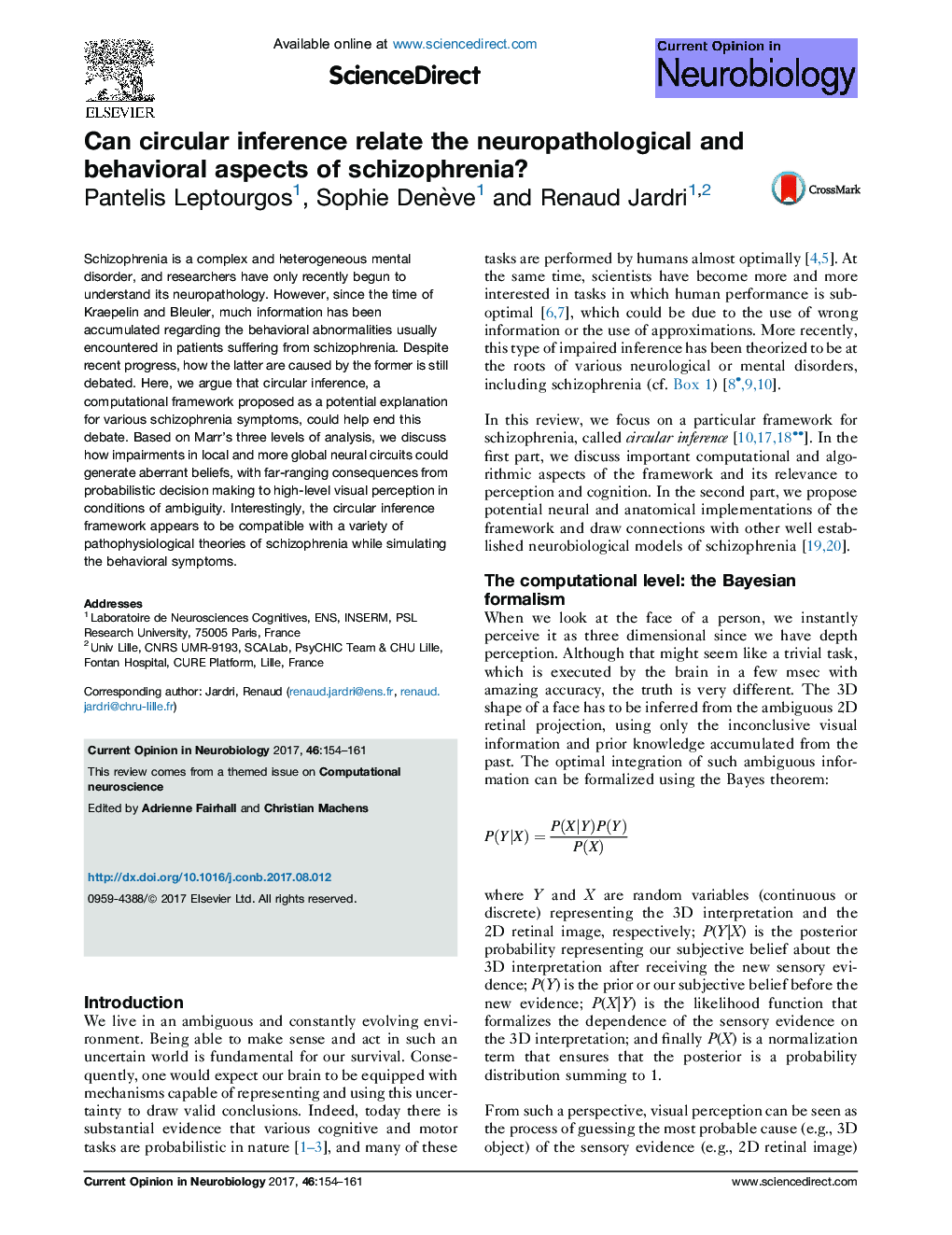| Article ID | Journal | Published Year | Pages | File Type |
|---|---|---|---|---|
| 5736982 | Current Opinion in Neurobiology | 2017 | 8 Pages |
Abstract
Schizophrenia is a complex and heterogeneous mental disorder, and researchers have only recently begun to understand its neuropathology. However, since the time of Kraepelin and Bleuler, much information has been accumulated regarding the behavioral abnormalities usually encountered in patients suffering from schizophrenia. Despite recent progress, how the latter are caused by the former is still debated. Here, we argue that circular inference, a computational framework proposed as a potential explanation for various schizophrenia symptoms, could help end this debate. Based on Marr's three levels of analysis, we discuss how impairments in local and more global neural circuits could generate aberrant beliefs, with far-ranging consequences from probabilistic decision making to high-level visual perception in conditions of ambiguity. Interestingly, the circular inference framework appears to be compatible with a variety of pathophysiological theories of schizophrenia while simulating the behavioral symptoms.
Related Topics
Life Sciences
Neuroscience
Neuroscience (General)
Authors
Pantelis Leptourgos, Sophie Denève, Renaud Jardri,
